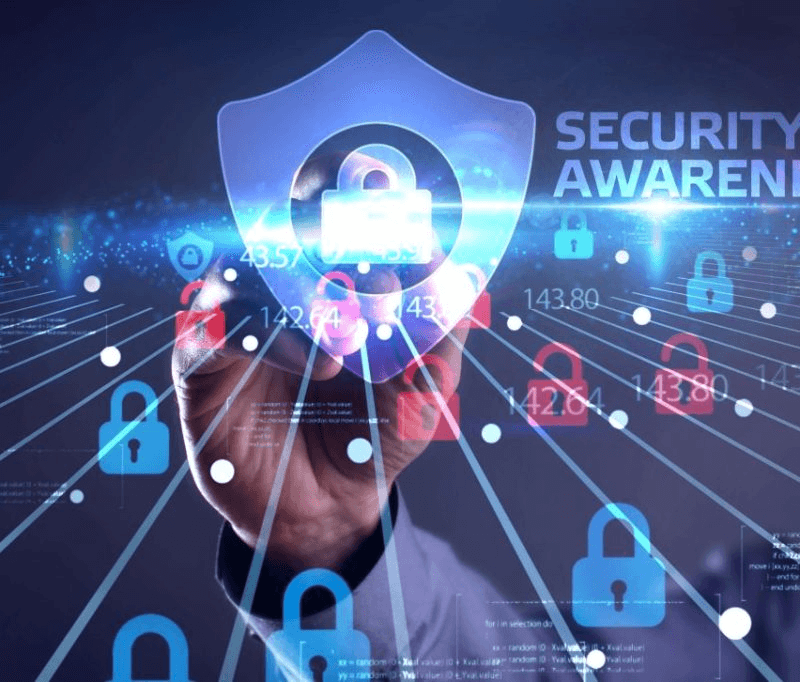In today’s digital age, businesses of all sizes depend on IT systems to manage operations, handle data, and stay connected with customers. However, this reliance brings increased risks from cyber threats such as data breaches, ransomware, phishing, and unauthorised access. Cybercriminals are constantly searching for system vulnerabilities to exploit. Regular network security checks, also known as network security assessments, are crucial for identifying and fixing these weaknesses before they’re targeted. This blog explores what security assessments involve, how they work, and why they’re essential for every business’s cybersecurity strategy.
Understanding Network Security Assessments
A network security assessment is a detailed review of your business’s IT systems, designed to uncover security risks. It looks at all areas of your network—hardware, software, data, and user access—to spot any weaknesses that cybercriminals could exploit.
The main aim of a security assessment is to understand your current level of protection, identify risks, and give recommendations for fixing them. These assessments help businesses prioritise which vulnerabilities need attention first, based on how serious they are.
For organisations already working with cybersecurity managed services, these assessments often form part of a wider, ongoing protection strategy. Managed services providers not only conduct regular checks but also apply the recommended fixes quickly, helping to maintain a resilient and responsive security posture.

Key Components of a Network Security Assessment
An effective network security assessment involves several steps. Here are the main components:
1. Asset Inventory and Mapping
This involves creating a full list of all the devices and systems connected to your network, including computers, servers, mobile devices, routers, and cloud services. It’s the first step in understanding what you need to protect.
2. Vulnerability Scanning
Automated tools are used to scan your systems for known security flaws. These tools can detect outdated software, missing patches, weak configurations, and other common problems.
3. Penetration Testing
Also called “ethical hacking,” penetration testing involves simulating real-world attacks to see how your network would respond. This helps uncover vulnerabilities that automated scans might miss.
4. Configuration Reviews
Your firewalls, routers, and other network devices are checked to ensure they’re set up correctly. A poor configuration can open the door to cyber attackers.
5. Access Control Evaluation
This part looks at who can access your systems and how. It checks for things like weak passwords, shared accounts, and users having more access than necessary.
6. Security Policy Review
All your business’s security policies are reviewed to make sure they are up to date and effective in protecting your systems and data.
Types of Network Security Assessments
Different types of assessments are available depending on your needs:
- External Assessments: These check how your systems appear to outsiders on the internet. They identify weaknesses that external attackers could exploit.
- Internal Assessments: These look at your systems from the inside, assuming an attacker has already broken in. They help find ways attackers could move around within your network.
- Compliance-Focused Assessments: These ensure your network meets regulatory standards, such as GDPR or PCI DSS.
- Comprehensive vs. Targeted: A full assessment reviews every part of your system, while a targeted one focuses on a specific area like cloud security or remote access.
- Manual vs. Automated: The best assessments use both automated tools and manual reviews to cover all bases.
The Process of Conducting a Network Security Assessment
A proper network security check follows a step-by-step process to be effective:
Pre-Assessment Planning
Start by setting clear goals. Are you checking for general security risks, or looking into a specific concern?
Next, make an inventory of all your devices and services, and decide which ones are critical. Not all systems carry the same risk.
Assemble a team to carry out the assessment. This may include your internal IT staff and possibly external experts.
Finally, inform your team and other stakeholders about the assessment process, especially if it could cause minor disruptions.
Assessment Execution
Run automated scans to identify known vulnerabilities like outdated software or open ports.
Follow up with manual tests to dig deeper. This may include checking password strength, trying to bypass login screens, or testing how far an attacker could go once inside.
Review how your network is segmented. Proper segmentation keeps sensitive systems isolated and harder for attackers to reach.
Test your detection systems by simulating cyberattacks. This shows whether you can catch threats early.
Check your authentication and access systems to see if users have appropriate levels of access.
Data Analysis and Reporting
Once all the data is gathered, vulnerabilities are ranked by severity (Critical, High, Medium, Low). A risk matrix helps you see which issues pose the most danger to your business.
Recommendations are then made to fix the issues. These include step-by-step actions, estimated costs, and timelines for resolution.
Finally, the results are presented in a clear report with visuals and simple explanations for non-technical stakeholders.
Why Regular Network Security Assessments Matter
Network security checks are not a one-time task—they should be done regularly. Here’s why:
1. Identifying and Reducing Risks
Assessments help you find weaknesses early. Fixing them in time prevents attackers from taking advantage and reduces the risk of data breaches or downtime.
They also help your IT team focus on real threats rather than spending time on low-risk issues.
2. Staying Compliant
Many industries have rules that require regular security checks. These include GDPR, HIPAA, and others. Failing to comply can lead to legal trouble and fines.
Security assessments provide documented proof that you’re following the rules, which is useful during audits.
3. Building Trust
When you show customers, partners, and investors that your systems are secure, it builds confidence. People are more likely to work with businesses that take cybersecurity seriously.
Having recent security assessment reports can even give you a competitive edge, especially when working with clients who prioritise data protection.
Challenges in Network Security Assessments
Even though these checks are crucial, there are challenges that businesses face:
Evolving Threats
Cyber threats are always changing. Hackers come up with new techniques every day. Your assessments must be up to date to catch new threats.
Legacy systems (older technology) can also be hard to secure and may not support modern security tools.
Lack of Resources
Not every business has a full IT security team. Hiring experts and buying tools can be expensive.
Time is also a factor—many businesses delay assessments because they’re too busy with daily tasks. However, waiting until after a breach can cost much more.
This challenge is especially common in the non-profit sector. Organisations such as charities often have limited budgets and small teams. Specialised IT support charities can rely on helps bridge this gap, offering tailored services that maintain security while respecting financial constraints. These providers understand the unique needs of charitable organisations and deliver cost-effective solutions without compromising on protection.
Best Practices for Security Assessments
To get the most out of your assessments:
- Define the scope and objectives clearly.
- Use a mix of automated tools and manual checks.
- Focus on the most serious risks first.
- Write reports that are easy to understand and take action on.
- Conduct assessments regularly—quarterly or twice a year is ideal.
- Learn from each assessment to improve your next one.

The Future of Network Security Assessments
Technology is changing the way security checks are done. Some of the exciting trends include:
- Artificial Intelligence (AI): AI can detect unusual patterns in your network that might signal an attack.
- Real-time Monitoring: New tools can check your network 24/7, instead of only at scheduled times.
- Cloud-Based Platforms: These allow businesses to run assessments without needing expensive hardware.
- Zero Trust Models: A growing trend where no one is trusted by default, even inside your network.
These tools help businesses respond faster and stay one step ahead of attackers.
Conclusion
Cyber threats are constantly evolving, but regular network security assessments can give your business the tools to fight back. These checks help you find vulnerabilities, protect sensitive data, stay compliant with regulations, and build trust with your stakeholders.
At Renaissance Computer Services Limited, we believe that prevention is always better than cure. A well-planned security assessment can save your business from major financial and reputational damage down the road. Investing in network security today is a smart decision for a safer digital future.






